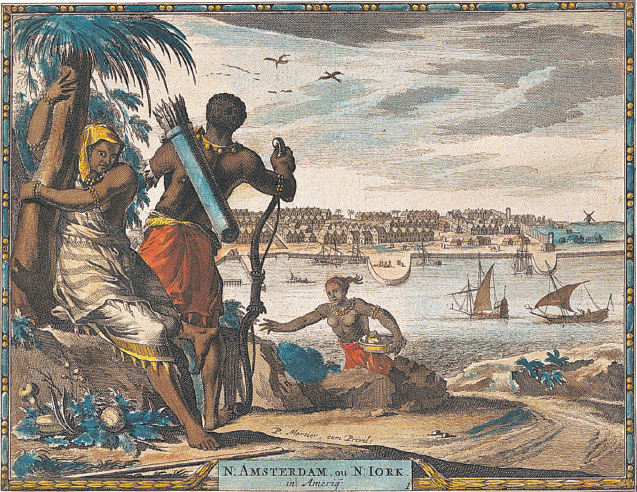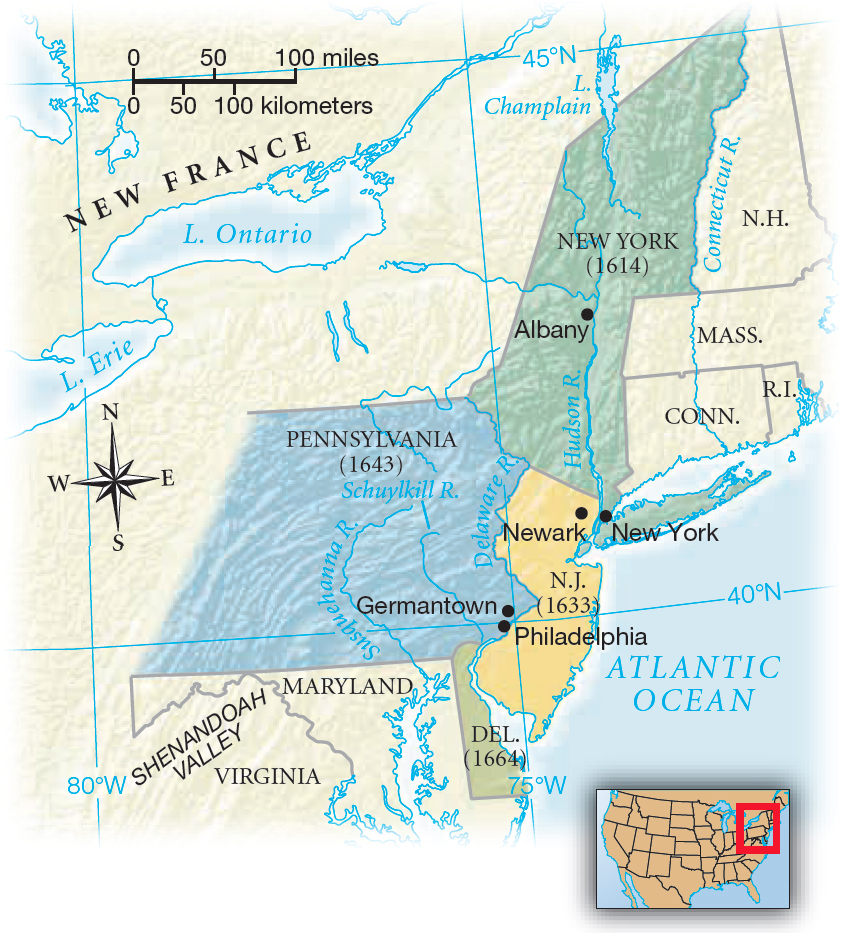What was distinctive about the middle colonies?
Printed Page 98
SOUTH OF NEW ENGLAND and north of the Chesapeake, a group of middle colonies were founded in the last third of the seventeenth century. Before the 1670s, few Europeans settled in the region. For the first two-thirds of the seventeenth century, the most important European outpost in the area was the relatively small Dutch colony of New Netherland. By 1700, however, the English monarchy had seized New Netherland, renamed it New York, and encouraged the creation of a Quaker colony in Pennsylvania led by William Penn. Unlike the New England colonies, the middle colonies of New York, New Jersey, and Pennsylvania originated as land grants by the English monarch to one or more proprietors, who then possessed both the land and the extensive, almost monarchical, powers of government (Map 4.2). These middle colonies attracted settlers of more diverse European origins and religious faiths than were found in New England.

CHRONOLOGY
1609
- – Henry Hudson searches for a Northwest Passage.
1626
- – Peter Minuit purchases Manhattan Island for the Dutch; New Amsterdam is founded.
1664
- – English seize New Amsterdam and rename it New York.
- – Colony of New Jersey is created.
1681
- – Colony of Pennsylvania is founded.
